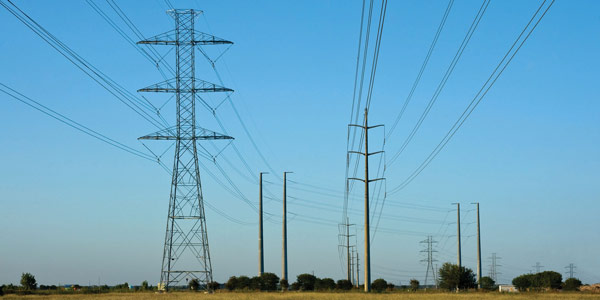By Tom Kleckner
AUSTIN, Texas — ERCOT’s Technical Advisory Committee last week approved a revision to the ISO’s planning guide that some stakeholders called the most important policy change this year.
The planning guide revision request (PGRR042) changes the criteria used to determine the need for new transmission projects. It defines considerations for selecting the most appropriate demand forecast in planning studies and how to address certain generation resources, such as switchable and mothballed units, in planning cases.
The change also describes how to incorporate new generation units in sensitivity analyses when they have interconnection agreements, but have not met all the requirements to be included in transmission-planning studies.
[Editor’s Note: An earlier version of this story incorrectly stated that the rule change would require a 2,800-MW reserve and spell out maximum dispatch levels for wind and solar generation. Those provisions were deleted from the revision that was approved by the TAC.]
‘Critically Important’

“It’s critically important to have balance in our planning process, because we’ve observed transmission costs and the transmission projects this planning criteria applies to are some of the most expensive items this stakeholder body reviews and approves,” said Reliant Energy’s Bill Barnes. “It has an impact on the cost to consumers, it has an impact on the market … there has to be some balance in the planning process. [The change] makes a lot of sense and is a huge step forward in how we think about planning the transmission system, and being responsive to the needs of the competitive market.”
“This is perhaps the most meaningful transmission reform since I’ve been involved with ERCOT,” said Shell Energy’s Greg Thurnher. “I don’t know that ERCOT has had discretion in the past to push back on some of the inputs to the planning process.”
The TAC approved the PGGR, which has been two years in the making, by a 24-4 vote with one abstention. ERCOT’s board of directors will take up the measure during its Dec. 13 meeting.
Cost Concern
The revision drew some pushback from stakeholders concerned about a revised impact analysis filed in October that indicated the need for two additional full-time positions at an estimated cost of $260,000-280,000. Committee members asked ERCOT staff to “beef up” its business case for the two positions before the board meeting.
Jeff Billo, the ISO’s senior manager for transmission planning, said the new staff is necessary to address increased responsibilities and workload being placed on his department and ERCOT’s forecasting unit, each of which would receive one new employee. The latter group’s work task is complicated by creating forecasts for ERCOT’s non-opt-in entities (Austin Energy, San Antonio’s CPS Energy and the Lower Colorado River Authority) and differences between the ISO’s use of coincident forecasts and transmission providers’ reliance on adding up individual substation forecasts.
“Part of the work in my group is not only [performing additional sensitivity] studies, but working with the load forecasting group to ensure we’re providing the proper load forecast,” Billo said. “The additional FTE is making sure we get the numbers right with our load forecasts.”
“The bottom line is this will affect the [administrative] fee,” the LCRA’s John Dumas said.
Barnes said he was sensitive to Dumas’ concerns, but said the cost “pales in comparison to the benefits this rule change will give us.”
‘Pretty Compelling’
Noting ERCOT’s Tier 2 transmission projects cost at least $50 million, Barnes said, “If we find through this rule change that this saves one unnecessary Tier 2 project of $50 million anytime in the next 100 years, it will have met the criteria for the cost-benefit case, and that’s pretty compelling.”
Responding to a comment that recalled ERCOT saying it wouldn’t raise its admin fee for the next several years, ERCOT COO Cheryl Mele said, “Hopefully, two FTEs is not enough to damage that expectation going forward.”
Some TAC members also raised questions about the proposed use of the “bounded higher of” load forecast methodology—in which ERCOT will compare its load forecast with the summed bus-level forecast for each weather zone. A motion to table PGRR042 for a month was easily defeated by a 21-7 margin, with one abstention.
“We’re interested in working through and talking about whether the higher-up bounding methodology makes sense,” said Luminant Generation’s Amanda Frazier. “There are a lot of open questions around … whether there should be different values between weather zones … we are concerned about codifying the process before that discussion happens.”
The TAC’s endorsement will allow staff to use the new planning methodology as it begins developing the 2017 Regional Transmission Plan in January. Following next year’s “test drive,” the methodology will become effective in 2018.
“Going to board now allow us to get started with 2017 planning under the new assumptions and studies,” Billo said.




